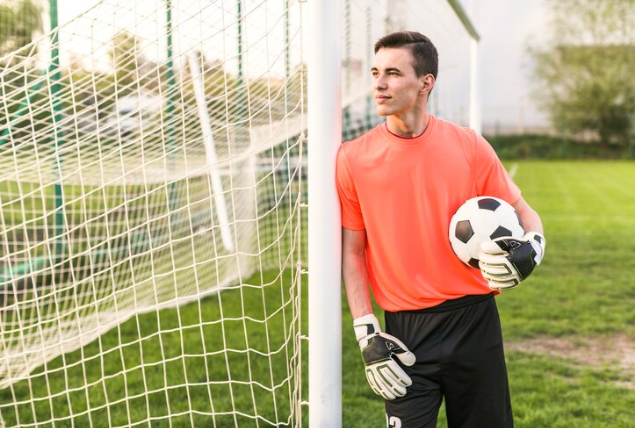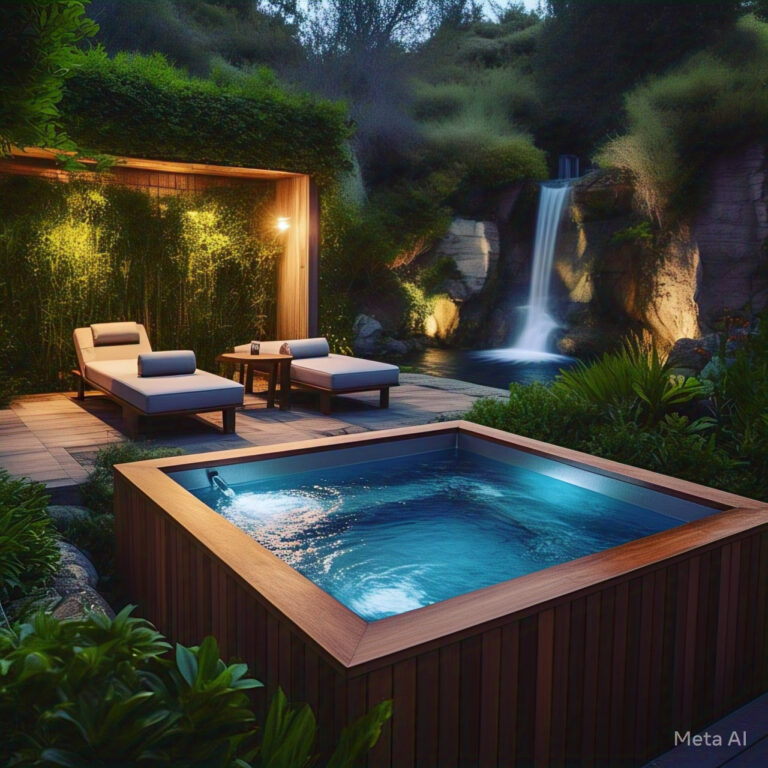Selecting the appropriate soccer goals is crucial for ensuring a safe, enjoyable, and productive playing experience. Whether you are setting up goals for a professional league, a school team, or a community club, the right goals can significantly impact the quality of play and the longevity of the equipment. Goals need to be durable, safe, and suitable for the players’ age and skill levels. Making an informed choice is essential to meet these requirements and to provide the best possible environment for soccer players.
Overview of Aluminium Goals and Their Benefits
Aluminium goals have become increasingly popular due to their numerous advantages over traditional materials. These goals offer a combination of strength, lightweight construction, and resistance to rust and corrosion. The benefits of aluminium goals include:
- Durability: Aluminium is strong and can withstand rough play and harsh weather conditions.
- Lightweight: Easier to move and set up compared to heavier materials like steel.
- Corrosion Resistance: Aluminium does not rust, making it ideal for outdoor use in various climates.
- Low Maintenance: Requires less upkeep compared to other materials, ensuring long-term use without significant maintenance efforts.
Key Factors to Consider When Choosing Aluminium Soccer GoalsSize and Dimensions Based on Age Groups and Play Levels
One of the first considerations when choosing aluminium soccer goals is the size and dimensions appropriate for the intended users. Soccer goals come in various sizes to accommodate different age groups and skill levels. Here are some general guidelines:
- Youth Soccer (Under 10 years): Goals typically measure 6.5 x 18.5 feet (2 x 5.6 meters).
- Intermediate Soccer (10-14 years): Goals often measure 7 x 21 feet (2.1 x 6.4 meters).
- Adult Soccer: Full-size goals are usually 8 x 24 feet (2.4 x 7.3 meters).
Selecting the right size ensures that the goals are appropriate for the players, promoting fair play and proper development of skills.
Weight and Portability for Easy Setup and Transport
The weight and portability of aluminium soccer goals are crucial factors, especially for those who need to move the goals frequently. Aluminium’s lightweight nature makes it easier to transport and set up compared to heavier materials like steel. When considering portability, look for features such as:
- Wheels: Integrated wheels can make it easier to move the goals around the field.
- Folding Mechanisms: Some aluminium goals can be folded for easier storage and transport.
- Quick Assembly: Goals that can be quickly assembled and disassembled are ideal for multipurpose fields and temporary setups.
Comparing Aluminium Goals with UPVC Match GoalsDurability and Strength Comparison
When comparing aluminium goals to UPVC match goals, durability and strength are key considerations:
- Aluminium Goals: Known for their robustness and ability to withstand intense play and harsh weather conditions. They do not warp or break easily, making them suitable for both permanent and portable setups.
- UPVC Goals: While UPVC is durable and resistant to weather, it is not as strong as aluminium. UPVC goals are more prone to cracking or breaking under heavy impact and may not last as long as aluminium goals.
Overall, aluminium goals offer superior strength and longevity, making them a better investment for serious play.
Cost-Effectiveness and Long-Term Value
Cost-effectiveness and long-term value are important factors in choosing between aluminium and UPVC goals:
- Initial Cost: UPVC goals are generally less expensive upfront compared to aluminium goals. However, the lower initial cost may come with trade-offs in terms of durability and lifespan.
- Long-Term Value: Aluminium goals, despite their higher initial cost, often provide better long-term value due to their durability and low maintenance requirements. They are less likely to need replacement or extensive repairs, leading to cost savings over time.
Considering both initial cost and long-term value, aluminium goals are typically more cost-effective for those looking to make a lasting investment.
Safety Features to Look ForStability and Anchoring Systems
Safety is paramount when selecting soccer goals, and stability is a critical aspect. Look for aluminium goals that come with effective anchoring systems to prevent tipping or movement during play:
- Ground Anchors: Ensure the goals have secure ground anchors that can be easily installed on various surfaces, including grass, turf, and indoor fields.
- Weighted Bases: For portable goals, weighted bases can provide additional stability without the need for permanent anchoring.
Proper anchoring systems are essential to ensure player safety and prevent accidents.
Rounded Edges and Protective Coatings
Another important safety feature is the design of the goal’s edges and surfaces. Goals should have:
- Rounded Edges: Rounded edges reduce the risk of injuries from sharp corners or edges, making the playing environment safer.
- Protective Coatings: Aluminium goals should have protective coatings to prevent rust and corrosion, ensuring they remain safe and structurally sound over time.
Customization Options for Aluminium GoalsPersonalizing Branding and Color Schemes
One of the advantages of choosing aluminium soccer goals is the ability to customize them to reflect your team’s branding and aesthetic preferences. Customization options include:
- Color Schemes: Aluminium goals can be powder-coated in a variety of colors to match team colors or blend with the surroundings. This not only enhances the visual appeal but also promotes team identity.
- Logos and Branding: Custom logos and decals can be added to the goals. This is especially beneficial for schools, clubs, and organizations that want to showcase their brand prominently.
- Unique Designs: For a more personalized touch, custom designs and patterns can be applied to the goals, making them stand out on the field.
Personalizing your aluminium goals can create a sense of pride and ownership among players and supporters, making the game more enjoyable and visually appealing.
Adding Nets, Wheels, and Other Accessories
In addition to aesthetic customizations, there are several functional accessories that can enhance the usability and convenience of your aluminium soccer goals:
- Nets: High-quality, durable nets are essential for soccer goals. Options include different thicknesses, colors, and mesh sizes. Ensure that the nets are weather-resistant and easy to attach and remove.
- Wheels: Adding wheels to the base of the goals can make them easier to move, especially for multi-use fields. Look for wheels that are robust and can be locked in place to ensure stability during play.
- Backstays and Brackets: Reinforced backstays and brackets provide additional support and stability to the goals, ensuring they remain upright and secure during intense matches.
- Anchoring Systems: While aluminium goals are lightweight, securing them properly is crucial for safety. Consider ground anchors, sandbags, or weighted bases to keep the goals firmly in place.
These customization options and accessories can enhance both the functionality and appearance of your aluminium soccer goals, making them more versatile and user-friendly.
Installation and Maintenance TipsStep-by-Step Guide to Setting Up Aluminium Soccer Goals
Proper installation of aluminium soccer goals is essential to ensure safety and stability. Here’s a step-by-step guide to help you set up your goals correctly:
- Choose the Location: Select a flat, level area on the field where the goals will be placed. Ensure there is ample space around the goals for safe play.
- Assemble the Frame: Follow the manufacturer’s instructions to assemble the goal frame. Typically, this involves connecting the crossbar, posts, and backstays using bolts or clips provided.
- Attach the Nets: Secure the nets to the frame using hooks, clips, or ties. Make sure the net is taut and evenly distributed to prevent sagging.
- Secure the Goals: Use the anchoring system provided to secure the goals to the ground. This may involve driving ground anchors into the soil or attaching weighted bases.
- Check Stability: Ensure the goals are stable and do not wobble or shift. Test by applying gentle pressure to different parts of the frame.
Proper setup ensures that the goals are safe and ready for use, minimizing the risk of accidents and injuries.
Maintenance Practices to Extend the Lifespan of Your Goals
Regular maintenance is key to keeping your aluminium soccer goals in excellent condition and extending their lifespan. Here are some maintenance tips:
- Regular Cleaning: Clean the goals periodically to remove dirt, debris, and grime. Use mild soap and water, and avoid abrasive cleaners that could damage the surface.
- Inspect for Damage: Routinely check for signs of wear and tear, such as cracks, dents, or loose bolts. Address any issues promptly to prevent further damage.
- Protect from Weather: While aluminium is resistant to rust, prolonged exposure to harsh weather can still cause wear. Store the goals indoors or cover them during extreme weather conditions.
- Tighten Bolts and Screws: Ensure all bolts, screws, and fasteners are tight and secure. Loose components can compromise the stability and safety of the goals.
- Replace Worn Nets: Inspect the nets regularly for holes or fraying. Replace them as needed to ensure they function properly during play.
By following these maintenance practices, you can ensure that your aluminium soccer goals remain safe, functional, and aesthetically pleasing for many years.
Conclusion
Choosing the right aluminium soccer goals involves considering several key factors to ensure you get the best product for your needs. Important points include:
- Size and Dimensions: Select goals that are appropriate for the age group and skill level of the players.
- Weight and Portability: Choose lightweight, portable goals for easy setup and transport.
- Durability and Strength: Aluminium goals offer superior durability and resistance to weather and wear compared to UPVC match goals.
- Customization Options: Personalize your goals with branding, color schemes, and functional accessories like nets and wheels.
- Safety Features: Ensure the goals have proper anchoring systems and safety features like rounded edges and protective coatings.
- Installation and Maintenance: Follow proper installation procedures and regular maintenance practices to extend the lifespan of your goals.
Choosing the Best Aluminium Soccer Goals
Investing in quality aluminium soccer goals is a wise decision for any soccer club, school, or recreational facility. Aluminium goals offer a perfect balance of strength, durability, and portability, making them ideal for both competitive matches and casual play. By considering the factors outlined in this guide and selecting a reputable manufacturer, you can ensure that your soccer goals will provide safe and enjoyable play for many years to come.







